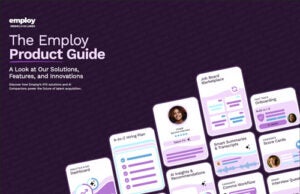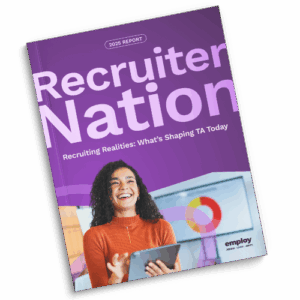Talent relationship management (TRM) offers more flexibility and transparency for your hiring team than the traditional options. It gives you one place to store information about candidates through the hiring cycle, but it offers a great deal more.
In short, talent relationship management software helps your talent team nurture truly impactful, long-term relationships with candidates and provides you with a healthy and thriving talent pipeline.
According to our State of Recruiting Report, 71% of the 700 businesses polled agreed it’s more important than ever for candidate relationship management (CRM) capabilities like LeverTRM to be built into their main applicant tracking system (ATS).
Adapting to this pressing need, companies of all sizes and across industries now utilize both a CRM and ATS jointly to help foster a more cohesive and coordinated hiring process.
TRM offers the best of both worlds in one solution. This makes it simple for your team to follow best practices and allows them to better communicate and collaborate every day.
Here are the key benefits of using talent relationship management software to develop and sustain relationships with candidates that go beyond what other solutions can provide.
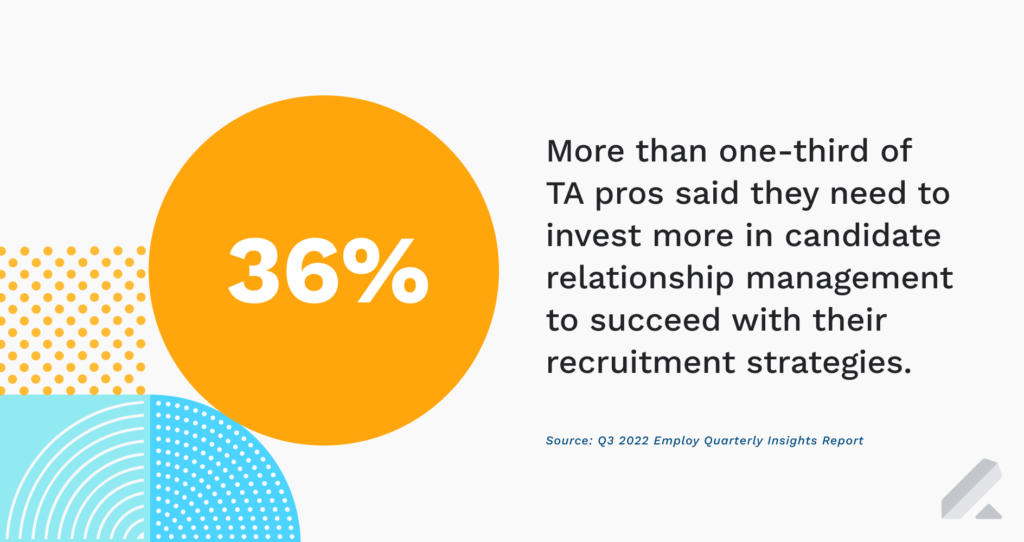
What is TRM software?
TRM software provides a single database for all your candidate information and a platform to maintain seamless communication. Where ATS provides a database, TRM goes a step further.
For instance, you can automate processes through your TRM platform to conduct personalized outreach to your candidates.
What’s more, your team can communicate in an unencumbered way, so each phase of the interview process is handled seamlessly, no matter how many departments and hiring team members are involved.
Simply put, TRM software combines the qualities of your CRM with your ATS.
You can use it for reporting, nurturing, and storing traditional candidate information — résumés, but also other context regarding prospects (e.g., origin of source, answers to application questions).
This solution ultimately makes it easier to develop and maintain relationships with talent, even after the hiring process ends, and gives you the tools to effectively engage candidates.
What are the key benefits of talent relationship management software?
An ATS offers tools to support many core hiring functions — but TRM takes it a step further. Here are 10 benefits TRM solutions offer businesses of all sizes and across industries today.
1) Keep all the functionality of your ATS
Many companies use an ATS for basic tasks — primarily, to organize and screen resumes, manage your candidate information, create job descriptions, and post listings.
But talent relationship management software has this functionality built right into the platform and offers robust capabilities that help TA teams streamline and scale their hiring (e.g., automated nurture campaigns, real-time analytics, DEI/EEO reporting).
2) Optimize the recruitment process
With advanced features and transparent overviews, you can see the way your recruitment process functions, from start to finish. This gives your hiring team access to insights that can help them improve and streamline the sourcing, nurturing, interviewing, and hiring process.
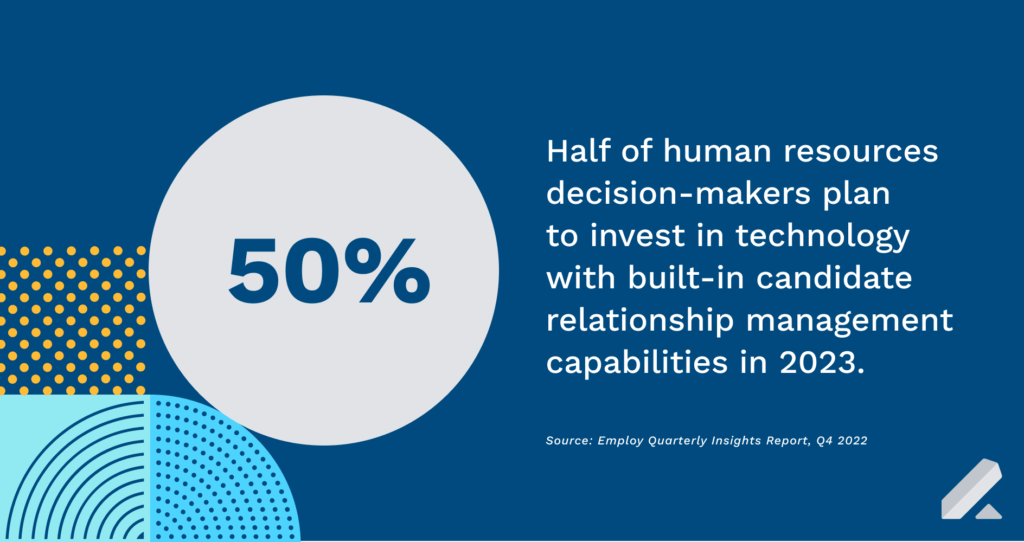
3) Simplify communication
With a central location for all your talent acquisition data, your entire TA team can see where each candidate is in your recruitment funnel in real time.
Moreover, they can connect with qualified prospects — individually and/or by segment — via intelligent communication activities like automated nurture campaigns.
4) Customize candidate-marketing options
You can develop custom-tailored messaging for each prospect in your database to maintain communication with candidates of interest (and who are interested in your brand).
5) Make use of robust analytics
Reporting features in TRM software can help you drill down into your talent data associated with your processes, workflows, and hiring and improve core metrics (e.g., time to hire/fill).
The right TRM provides analytics that help everyone in your talent org better understand their own strengths and weaknesses with their core duties (e.g., sourcing across job boards and communities, conversion rates for of different nurtures) and improve their work.
6) Give your team predictive data
Predictive data can help inform adjustments to your recruiting and hiring programs.
For instance, you can evaluate recent hiring data by role, team, department, and/or location in your TRM software to determine where the highest-quality hires (i.e., those who have been with the business for some time and contributed to growth, per their managers/performance data) came from in terms of source, then double down on those sourcing avenues.
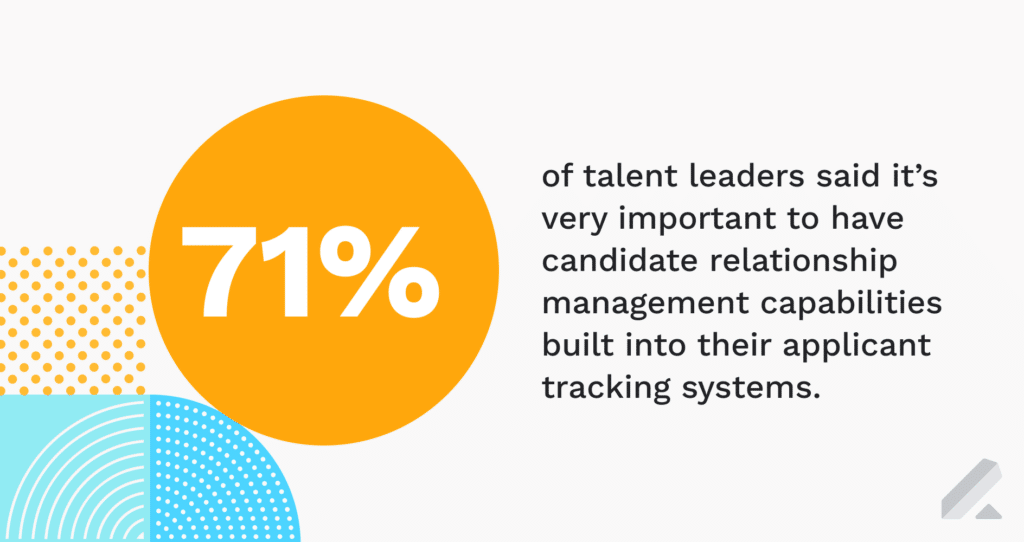
7) Organize your talent pipeline
With LeverTRM, you can structure your talent pipeline in myriad ways using tags that denote candidates’ skills and experience and the primary reason for ‘archiving’ them so you can focus on engaging only the right candidates for open and upcoming roles with nurture messaging.
8) Improve your employer brand
With a wealth of recruiting data in your TRM, you can work more closely with your colleagues in HR to assess aspects of your employer brand you could stand to improve (e.g., more proactive communications to prospects instead of reactive messaging).
9) Manage and improve onboarding
Your TRM doesn’t stop when the position is filled. You can use the features in the solution to help with the onboarding process (i.e., provide the requisite context/info on a new hire to HR).
10) Manage internal communications
One of the most difficult parts of the interviewing and hiring process is the fact that many members of your company can be involved. You might also have separate departments.
For instance, the initial interview might be conducted by HR, but the candidate might then be moved to the direct hiring manager in their department and then further up the chain to the head of the department.
This is typical for many companies and it’s difficult to organize or share without a system.
TRM gives you a single location to develop a workflow for this hiring process. You can set alerts and reminders so that candidates are always contacted in a timely manner and internal staff has access to information from previous interviews.
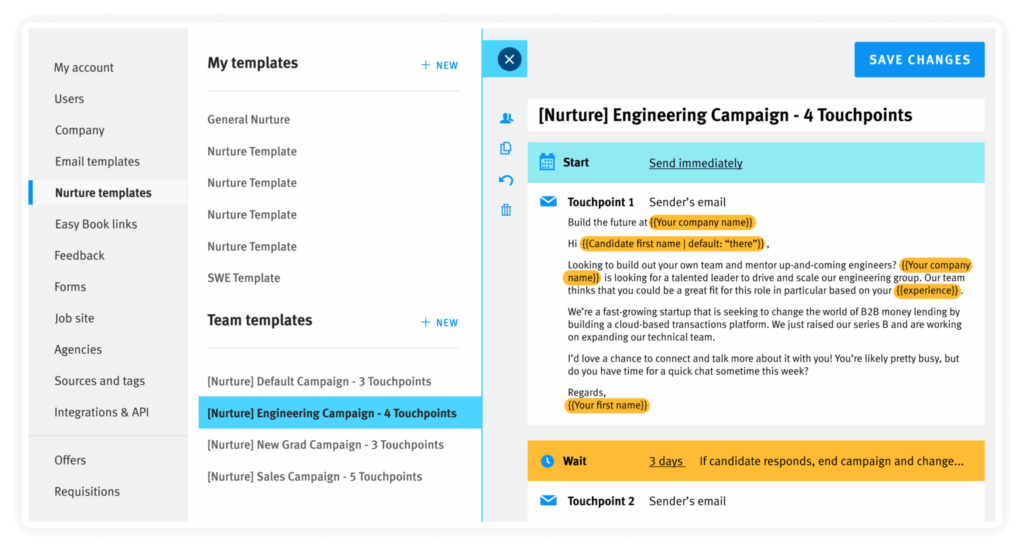
Why do recruiters need TRM software?
TRM is perfect for recruiters and talent specialists, since both have a heightened need for organization with their respective responsibilities around interviewing and hiring.
Leveraging an advanced TRM ultimately gives these teams (along with hiring managers and interview panelists) an improved view of their entire talent pipeline and recruiting activities.
This makes the task of organizing and sourcing talent much simpler. It also means that they have an easy and efficient way to maintain communication with their candidates.
They can nurture candidate relationships seamlessly so no one slips off the radar.
It’s true recruiters and TA pros are using more platforms and channels than ever before. TRM software, though, is a must-have solution, as it can help you develop personalized messaging for candidates throughout the entire, end-to-end, full-cycle recruiting process.
You can automate tasks from a central location — not several disparate tools — which means manual and time-consuming processes no longer hamper your hiring efforts.
It also means you’ll be able to complete your candidate search in less time, onboard more seamlessly, and improve the experience for both staff and candidates.
Download our in-depth talent relationship management guide to learn what you and your TA team can do to build better long-term relationships with candidates you source and engage.











